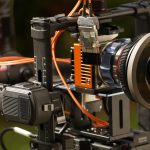Advanced Camera Colour Profiles is a new feature that allows cinematographers to fundamentally change the way in which the camera interprets colours.
Until now, cameras have been pre-programmed with a default linear colour profiles (IDTs) that determine the accuracy of all colours. However, this approach significantly limits the accuracy of super-saturated colours, which are often clipped by being mapped outside the spectral locus. The accuracy of those super-saturated colours has been impossible to achieve through means of a linear transforms (IDTs) commonly used in colour processing pipelines. These limitations let to workarounds, such as gamut compression, which do not fully solve the problem of super-saturated colour reproduction in digital cameras. The ACHTEL 9×7 provides the option to choose non-linear processing of super-saturated colours, while still retaining the smoothness, accuracy and tonalities of subtle colours, such as skin tones.






